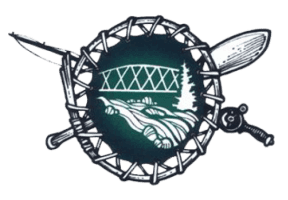Emergency Preparedness
Commitment to Emergency Planning
The Township of Sioux Narrows-Nestor Falls is dedicated to emergency preparedness. Our current, up-to-date Community Emergency Management Plan includes ongoing training to equip community officials for emergencies.
Community Emergency Management PlanBe Prepared, Not Scared
Disasters can disrupt your life entirely if you are unprepared. Expect the unexpected and plan for it. Knowing what to do when a disaster strikes helps you control the situation and recover more quickly.
Emergency Preparedness Guide
No community can handle all the demands of a catastrophe alone. Help your community by preparing yourself. Ensure everyone in your family knows what to do before, during, and after an emergency. Hold a family meeting to discuss your emergency preparedness plan.
Emergency Preparedness Workbook
We offer a helpful tool to create your personalized plan: the Sioux Narrows-Nestor Falls Emergency Preparedness Workbook. This workbook provides all the tools you need to prepare your family.
SNNF Emergency Preparedness WorkbookFamily Plan: Top Ten Actions
- Post emergency numbers in a visible place like the refrigerator.
- When calling for help, specify: who you are, where you are, what happened, and what help you need.
- Teach children how and who to call for help.
- Keep a home emergency kit handy.
- Store fresh water in a container, changing it every two weeks.
- Maintain a one-week food supply at all times.
- Teach family members how to turn off the gas, power, and water.
- Choose a family meeting place in case of evacuation. Inform friends to call this location for updates.
- Keep a survival kit in your car.
- Always keep your gas tank half full for potential evacuations.
Communication During Emergencies
- Tune into local radio stations for updates: CKSX Radio 91.1 FM, CBC Radio 95.7 FM, Kenora 89.5 FM, Fort Frances 93.1 FM, Warroad, MN 92.5 FM.
- Avoid using the telephone unless urgent to keep lines free for emergency workers.
If You Are Evacuated
- Pack essential items: clothing, blankets, eyeglasses, dentures, medications, chequebook, credit cards, important papers, ID, and toiletries.
- Turn off appliances (except refrigerators and freezers).
- Lock windows and doors.
- Leave pets indoors with food and water for 2-3 days (pets are usually not allowed at evacuation centers).
Emergency Kits
Home Emergency Kit
- List of prescribed medications
- First Aid Kit
- Battery-powered radio with extra batteries
- Flashlight with extra batteries
- Candles and matches
- Toiletries
Car Emergency Kit
- First Aid Kit
- 'Call Police' sign for window
- Warning flares
- Booster cables
- Fire extinguisher (multi-purpose dry chemical – ULC approved)
- Tire puncture kit
- Solar blanket
- Waterproof matches/butane lighter
- Large diameter candle in a deep can
- Insect repellent
Winter Additions for Car Kit
- Ice scraper
- Shovel
- Material for traction (e.g., kitty litter)
- Change of warm clothing
- Sleeping bag and axe saw if traveling out of town
Power and Heat Supply
- Portable Generator: Consider a generator for major power outages, especially for critical needs or essential business services. Ensure it runs outdoors and requires gasoline or diesel fuel.
- Backup Heat Sources: Ensure wood or gas stoves and fireplaces are properly installed and inspected, with extra fuel on hand. Avoid unvented combustible heat sources (e.g., charcoal or propane barbecues, kerosene heaters) as they emit deadly fumes.
- Emergency Plan: Include a location with power and heat supply if your house lacks them.
Download this printable list of items for a Grab and Go Bag and an Evacuation To-Do List.
Grab and Go Bag Checklist & Evacuation To Do ListAdditional Information
For more information on Community Emergency Preparedness Planning, contact us. We provide information and literature to assist with your family's emergency plan.
Also, for more information on emergency preparedness, check out the following websites:
